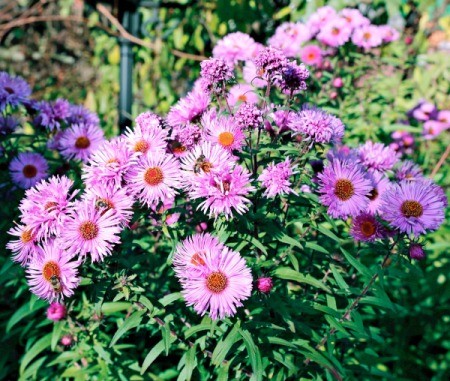
For beginning gardeners, the plant world can seem fraught with confusing, and often hard to pronounce, terminology. Fortunately, and I think most plants would agree with me, it isn't necessary to commit a large number of gardening terms to memory in order to successfully grow something. That said, your chances of growing plants successfully increase when you know a little something about their life cycle. Here's what you need to understand about ìperennials.î
Perennials are those plants that spring up in the garden faithfully year after year by way of roots, rhizomes, bulbs, corms, or tubers. They live for at least three or more growing seasons. This means that trees and shrubs are technically perennials. Growing perennials requires a bit of patience, because when grown from seed they take about three years to really get going in the garden. As the saying goes, the first year they sleep (put their energy into becoming established), the second they creep (this is usually when they flower for the first time), and the third they leap (really take off and grow large enough to divide).
Examples of perennials include bleeding heart, purple coneflower (echinacea), aster, irises, tulips, peonies, and hosta.
Many gardeners dream of a maintenance-free garden filled with nothing but masses and waves of colorful perennial flowers. Unfortunately, most will never realize this dream, because having a maintenance-free perennial garden is a myth. A garden filled with perennials can require just as much maintenance, sometimes more, than a garden of annuals. To look their best, plants in perennial gardens need to be protected from insects and disease, fed and watered, weeded and sometimes deadheaded, and many need to be divided every 3-5 years to prevent over-crowding.
Advantages Of Growing Perennials:
Unlike annuals, perennials only have to be planted once so they are considered a one time investment. In the long run, this saves both time and money. As some gardeners put it, perennials are a long-term investment whereas annuals are a yearly expense.
Perennials provide a succession of color throughout the growing season. Instead of the single burst of color you get with annuals, perennials bloom and die back at different times and provide an ever-changing landscape.
As a whole, there are probably more different types of perennial species to choose from than different types of annuals.
Disadvantages of Growing Perennials:

About The Author: Ellen Brown is an environmental writer and photographer and the owner of Sustainable Media, an environmental media company that specializes in helping businesses and organizations promote eco-friendly products and services.
Add your voice! Click below to comment. ThriftyFun is powered by your wisdom!
Add your voice! Click below to comment. ThriftyFun is powered by your wisdom!